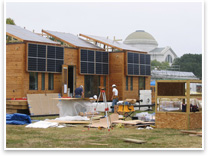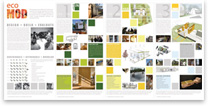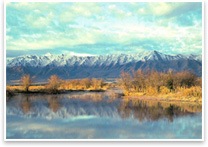 The AIA Issues RFQ to Convert National Offices into a Model 21st Century Workplace The AIA Issues RFQ to Convert National Offices into a Model 21st Century Workplace
Qualifications statements due November 6
The Institute on October 8 issued an RFQ to all AIA members, inviting them to submit their qualifications to assemble an Integrated Project Delivery design and construction team to re-create the AIA's headquarters in Washington, D.C., as a model 21st century workplace. The Architects Collaborative-designed structure, ahead of its time when opened in 1973, now needs a makeover: Its building systems are drawing close to the end of their useful lives, the envelope doesn’t meet current energy performance standards, and its space distribution/layout doesn’t foster a collaborative working style. The initial assessment and schematic design study, by architect Quinn|Evans, identified options to achieve the AIA’s 50-percent energy reduction goal by 2010, considered steps to enable future energy reductions to meet the Institute’s goal of being carbon-neutral by 2030, and laid out space planning alternatives to make the building a model workplace. The RFQ is open to all AIA architects; the Institute will use a.Qualifications Based Selection process conducted by a jury of peers and independent of the AIA Board of Directors. The jury will make a recommendation to the Board for approval at the December 2007 meeting. Qualifications Statements are due November 6. For more information, visit the AIA Web site Members Page. (Member sign-in is required.) 
 And
They’re
Off: the 2007 Solar Decathlon Under Way And
They’re
Off: the 2007 Solar Decathlon Under Way
After nine days’ hard work building their houses, testing systems,
and landscaping yards, 20 teams of university students from across
the nation and around the world began competing on the Capital Mall
in the 2007 Solar Decathlon October 12. The competition ends October
20. Now a biennial event run by the U.S. Department of Energy National
Renewal Energy Laboratory, and cosponsored by the AIA, the competition
requires cross-discipline teams to publicize their efforts and raise
money (DOE provides $100,000 seed money to each team) to design, build,
test, transport to Washington, and rebuild homes of up to 800 square
feet. The decathlon events simulate living comfortably while running
household chores, a home office, and getting around town in an electric
car—all powered by the sun. 
 Call for Entries for the 2008 NCARB Prize Call for Entries for the 2008 NCARB Prize
The National Council of Architectural Registration Boards (NCARB)
is now accepting entries for the 2008 NCARB Prize for Creative
Integration of Practice and Education in the Academy. Now in its
seventh year, the NCARB Prize supports combined practice and education
initiatives at the university level. Architecture schools with
NAAB-accredited degree programs are invited to submit established
projects, completed or in progress by the end of the fall 2007
term, that respond to the integration of education with practice.
Six cash awards, totaling more than $60,000, will be presented.
The six winning programs will be selected prior to the ACSA Annual
Meeting in March 2008. Visit
the NCARB Web site to download an entry packet. Submissions are due by February
5, 2008. (Pictured, the University of Virginia won the 2007
$25,000 Grand Prize for its “ecoMOD” prototypes of
modular, sustainable housing.) 
 AIA Communities by Design Releases 2008 Sustainable Design Assessment
Team (SDAT) Request for Proposals AIA Communities by Design Releases 2008 Sustainable Design Assessment
Team (SDAT) Request for Proposals
The SDAT, a community assistance program, provides communities with
integrated design and policy based assessments. Since
its inception in 2005, the SDAT program has accommodated 21 communities. SDATs
bring teams of volunteer professionals (such as architects, urban
designers, planners, hydrologists, and economists) together to work
with community decision makers, stakeholders, and residents to help
develop a vision and framework for a sustainable future. In 2008,
the AIA will provide up to $15,000 in cash and in-kind contributions
per SDAT. Communities will provide a $5,000 cash match as well as
contribute in-kind resources to the process. Community applications
for the 2008 SDAT program are due November 16. For
more information or the application packet, visit the SDAT Web site. (Photo from the
Cache Valley, Utah, SDAT in 2005, one of the first SDATS held.) 
|

 The AIA Issues RFQ to Convert National Offices into a Model 21st Century Workplace
The AIA Issues RFQ to Convert National Offices into a Model 21st Century Workplace And
They’re
Off: the 2007 Solar Decathlon Under Way
And
They’re
Off: the 2007 Solar Decathlon Under Way Call for Entries for the 2008 NCARB Prize
Call for Entries for the 2008 NCARB Prize AIA Communities by Design Releases 2008 Sustainable Design Assessment
Team (SDAT) Request for Proposals
AIA Communities by Design Releases 2008 Sustainable Design Assessment
Team (SDAT) Request for Proposals